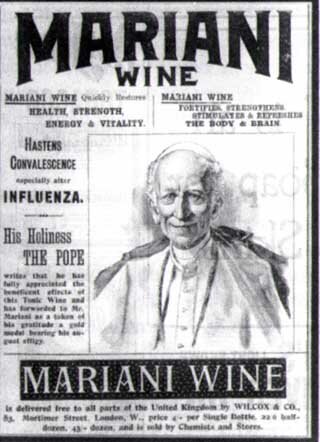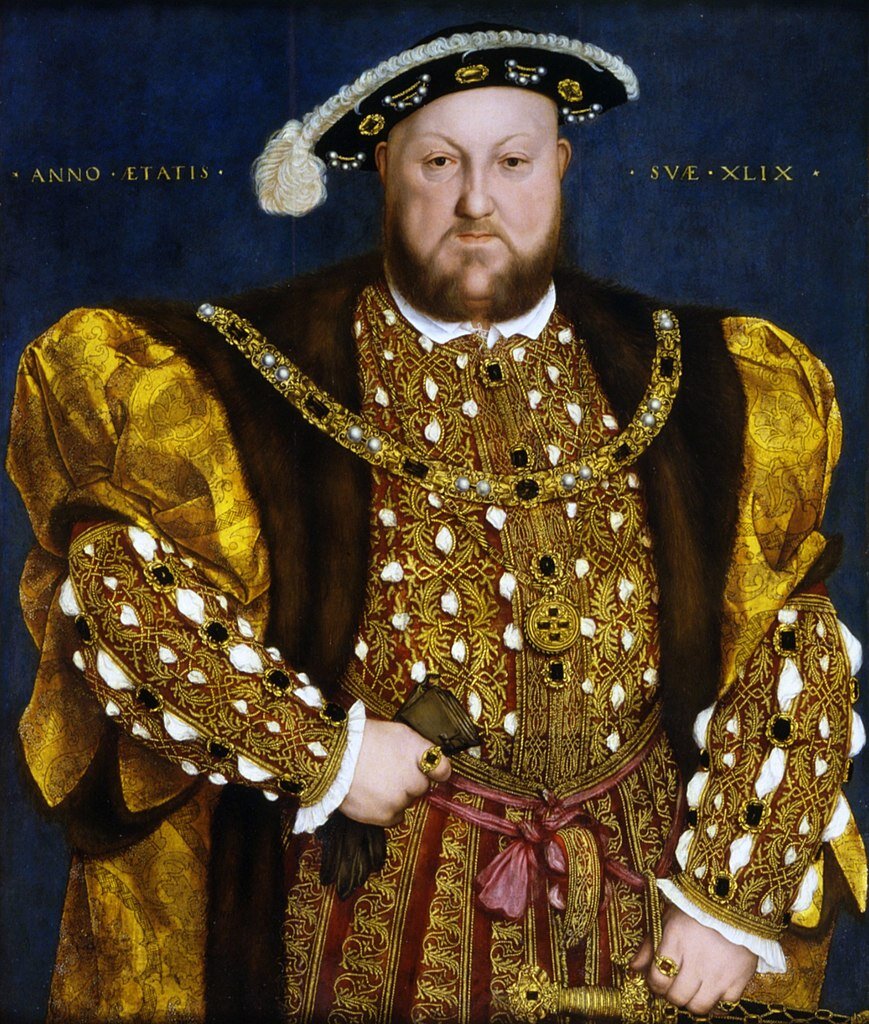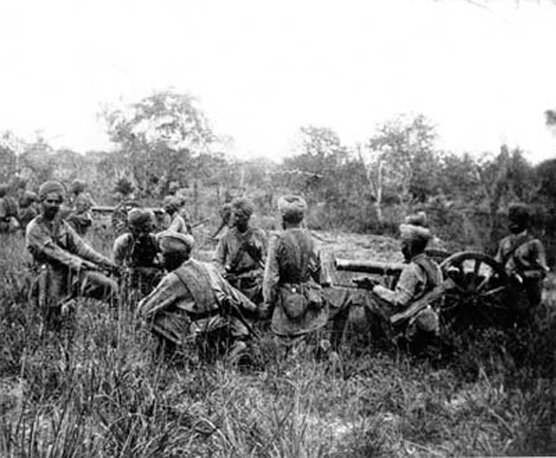While the Japanese attack on Pearl Harbor in World War II is well known, most people are less familiar with other Japanese attacks on US soil in World War II. Here, Daniel Boustead tells us about attacks on California and Oregon, and the occupation of Alaska.
U.S. soldiers fire mortar shells onto a Japanese position during the Battle of Attu in 1943. Aleutian Islands, Alaska.
The USA decided to join World War II because of two major factors: the well- known attack on Pearl Harbor and Hitler’s war declaration on December 11, 1941. In addition, in 1942, Japan achieved some strategic gains by launching some lesser-known attacks on the continental United States. The Japanese were an effective Axis Power in part as they occupied a U.S. territory. Additionally, their attacks were not only limited to Hawaii. They also attacked California, Oregon, and Alaska.
The Japanese attack on the U.S. military Base at Pearl Harbor on December 7, 1941 was devastating. The attack killed 2,008 Navy personnel, killed 109 U.S Marines, killed 218 U.S. Army Soldiers, and killed 68 civilians, for a total death toll of 2,403 people ([1]). The Japanese military strike also sunk the American Battleships Arizona and Oklahoma, the target ship Utah, and the Destroyers Cassin and Downes (1). The Japanese attack destroyed 96 Army Aircraft, and 92 Navy Planes, for total planes destroyed at 188 (1). The Japanese also lost 29 planes and five submarines during the raid (1).
Attacks on California and Oregon
In 1942 the Japanese military launched some attacks though while not as successful as Pearl Harbor, did achieve some gains for the Japanese. On February 22, 1942 the Japanese Submarine I-17 Submarine shelled the area of Ellwood City California near Santa Barbara, California ([2]). The attack by the I-17 lasted 20 minutes and only damaged a pier and oil well derrick near Santa Barbara California([3]). The I-17 attack did result in a shell exploding near an oil well causing about $500 in damage to a catwalk, some pumping equipment, and did create ‘invasion fears’ along the West Coast (2). A U.S. army soldier named Captain Bernard Hagen was wounded while trying to deactivate one of the fuses from one of the recovered shells from the Japanese I-17 Submarine attack (2). He was awarded the Purple Heart for this act (2).
On June 21, 1942 the Japanese Submarine I-25 took up position off the Oregon side of the mouth of Columbia River, and shelled the military base of Fort Stevens ([4]). The I-25 Submarine’s shells fell harmlessly in the sand and scrub around Battery Russell, damaging only the baseball diamond backstop and a power line(4). On the dates of September 9, 1942 and September 29, 1942, the Japanese Submarine I-25 launched an aircraft which conducted a single bombing raid in Oregon on those respective dates ([5]). The I-25 Submarine Aircraft’s bombing raids only resulted in little damage with only one incendiary bomb exploding to start a small fire on Wheeler Ridge Oregon, approximately four miles southeast of Mount Emily, Oregon (5). Within four hours of the first raid, General John L. DeWitt, commander of the Fourth Army and the Western Defense Command, sent staff officers to Washington D.C to obtain permission, to add a small squadron of P-38 Lightning Fighters to his defense forces (5). The I-25 Submarine aircraft attack on September 9, 1942 forced the U.S. military to divert valuable P-38 Lightning Fighter Aircrafts, which could have been used on other important military fronts.
Occupation of Alaska
During World War II, the Japanese would occupy Alaska, which in 1959 along with Hawaii would become a U.S. State. The Japanese decided to attack the Aleutian Islands in Alaska, as a means to divert American military resources away from the Japanese attack at Midway in June 1942 ([6]). The Japanese military also decided to occupy the two western Aleutian Islands in order to gain a psychological victory over the Americans by establishing a foothold on North American soil, and also hide their June 1942 Battle of Midway defeat ([7]). The Japanese launched an air attack on Dutch Harbor, Alaska between June 3 and June 4, 1942 which killed 43 Americans ([8]). The Japanese forces invaded and occupied the Aleutian Island of Kiska on June 6, 1942 and the Aleutian Island of Attu on June 7, 1942([9]). Fortunately, Kiska Island was unpopulated, and no civilians suffered under the Japanese occupation of this island ([10]). In contrast on Attu Island, Charles Foster Jones was taken away by the Japanese and never heard from again, while his wife Etta Jones was taken to a Japanese POW Camp in Yokohama, Japan ([11]). Etta Jones would survive World War II and was released on August 31, 1945 (13). In 1942 there were 43 Attu Aleuts, with one of the 43, traditional chief and village elder, John Artumonoff, dying of natural causes at age 56 during the Japanese occupation (12). On September 17, 1942 the Japanese transported 42 Attu Island natives to Japanese POW camps in Japan, of which only 25 Attuans and a surviving baby were repatriated after the war ([12]). The Attuans lost 17 out of the 42 that were transported to Japan, with also four out of five babies that were born in captivity dying at birth (12). The Americans responded to the Aleutian Islands invasion with outrage since this was the first time American soil had been occupied since the War of 1812 (14). Indeed in a nationwide public opinion poll, only 21% of Americans could find Hawaii on a map, while 71% could find Alaska (14). However, there were still some segments of the population who did not know the Aleutians had been invaded (14). More broadly, American war planners were still reeling from the aftermath of the Japanese attack of Pearl Harbor (9).
Retaking of Alaska
On May 11, 1943 the American military forces began the invasion of Attu to help retake Attu Island (15). The battle officially ended on May 30, 1943, when the Americans declared Attu secured after very fierce fighting (9). The widely accepted U.S. casualties from the Battle of Attu, according to the Army Source The Western Hemisphere, Guarding the United States and its Outposts, listed 549 American soldiers dead, 1,148 wounded and 2,100 suffering non-battle injuries (16). On the Island of Attu there were approximately 2,500 Japanese soldiers on Attu Island when the U.S. forces landed (17). According to Anchorage attorney, Michael McLaughlin, who visited the Attu battlefield on multiple occasions, used multiple sources from the National Archives and Records Administration in College Park Maryland, and the records of Camp Tracy, an interrogation center, he came to the following conclusion about the Japanese causalities (16). McLaughlin claimed that 28 Japanese soldiers were captured after the Battle of Attu, and one an officer was killed while trying to escape, which reduces the number of Japanese who went into captivity from 29 to 28 (16). This means that the Japanese suffered 2,471 died in battle, and one died while trying to escape, which totals to 2,472 men died out of an approximate garrison of 2,500 men during and after the campaign on Attu. This means the Japanese garrison on Attu suffered a 98.88% fatality rate.
The story was completely different on Kiska. On July 28, 1943 the Japanese military, under the cover of fog, evacuated the entire garrison of 5,183 men off of Kiska Island in “Operation Ke” (18). The reason why the Japanese evacuated troops off Kiska Island was as a means of reinforcing other Japanese occupied territories (21). The Americans came to Kiska Island on August 15, 1943 and found the island deserted (9). On August 24, 1943 the Americans declared Kiska Island secured and thus the Aleutian Islands campaign ended (9).
Later attacks on America
In 1944-45 the Japanese military used a secret weapon to attack America. On November 3, 1944 the Japanese military launched fusen bakudan or balloon bombs which were carried to America by the Pacific jet stream (19). The Japanese balloon bombs were armed with four incendiaries and one thirty-pound high explosive bomb (19). The Japanese balloon bombs were designed to cause damage and spread panic in the continental United States of America (19). The weapon achieved its greatest success on May 5, 1945 when an explosion from a Japanese balloon bomb killed six people in Bly, Oregon. Among those was Elsie Mitchel, who was five months pregnant (19). They were the only Americans killed by enemy action on the continental USA during World War II (19). Even though Bly locals knew about the attack they adopted a code of silence by military order and reported that the victims of the tragedy died of “an explosion of undetermined origin” (20). Even though the military did release information about the attack at the end of May 1945, its impact was not widely known (20). The reason for this is because the impact of the Pearl Harbor Attack dominated the history textbooks for decades to come, which caused news of the attack to not be widely known until recently. These various attacks make Imperial Japan the only Axis Power to launch attacks against American territory and the only one to occupy American soil during World War II!
In conclusion, the closely guarded, secretive and less publicized attacks by the Japanese and their subsequent invasion of the Alaskan Territory have now been revealed. Truly the Japanese were the most effective Axis Power to face the USA!
What do you think of the World War II Japanese attacks on US soil? Let us know below.
Now, you can read more World War II history from Daniel: “Did World War Two Japanese Kamikaze Attacks have more Impact than Nazi V-2 Rockets?” here.
[1] Zich, Arthur. The Rising Sun. Alexandria, Virginia. Time-Life Books Inc. 1978. 72.
[2] Hackett, Bob and Kinsepp Sander. SENSUIKAN! Imperial Submarines. IJN Submarine I-17: Tabular Record of Movement. Last Modified 2001-2017. Nihon Kaigun. Accessed on February 18th, 2021. http://www.combindedfleet.com/I-17.htm
[3] Boyd, Carl and Yoshida, Akihiko. The Japanese Submarine Force and World War II. Annapolis: Maryland. Bluejacket Books: Naval Institute Press. 1995 and 2002. 68.
[4] Wilma, David. “Japanese submarine shells Fort Stevens at the mouth of the Columbia River on June 21st, 1942”. Last Posted February 8th, 2005. Last corrected or Modified November 7th, 2011. History Link.org Essay 7217. Accessed February 18th, 2021. https://www.historylink.org/File/7217
[5] Boyd, Carl and Yoshida, Akihiko. The Japanese Submarine Force and World War II. Annapolis: Maryland. Bluejacket Books: Naval Institute Press. 1995 and 2002. 110.
[6] Rigge, Simon. War in the Outposts. Alexandria, Virginia. Time-Life Books Inc. 1980. 123.
[7] Cloe, John Haile. Attu the Forgotten Battle. United States Department of Interior-National Park Service- 2017. https://www.nps.gov/aleu/planyourvisit/upload/Attu-Forgotten-Battle-Optimized-508.pdf. 23.
[8] Rigge, Simon. War in the Outposts. Alexandria, Virginia. Time-Life Books Inc. 1980. 124 to 125.
[9] “Battle of the Aleutian Islands”. History Channel. Updated June 30th, 2020. Accessed on February 17th, 2021. https://www.history.com/topics/world-war-ii/battle-of-the-aleutians-islands
[10] Thiessen, Mark and Yamaguchi, Mari. “75 years later, ‘forgotten’ WWII battle on Alaskan island haunts soldiers”. Last Modified May 27th, 2018. www.armytimes.com . Accessed on February 15th, 2021. https://www.armytimes.com/veterans/2018/05/27/75-years-later-forgotten-wwii-battle-in-alaska-haunts-soldiers/
[11] Laurel, Bill. “Japanese invade Aleutian Islands 72 years ago”. Last Modified June 16th, 2014. Aunt Phil’s Trunk. Accessed on February 15th, 2021. https://auntphilstrunk.com/japanese-invade-aleutian-islands-72-years-ago/
13 “Last Letters from Attu-Letters from the POWs” www.lastlettersfromattu.com Accessed on February 15th 2021. https://www.lastlettersfromattu.com/powletters.asp
[12] Cloe, John Haile. Attu the Forgotten Battle. United States Department of the Interior-National Park Service-2017. https://www.nps.gov/aleu/planyourvisit/upload/Attu-Forgotten-Battle-Optimized-508.pdf. 32 to 33.
14 Cloe, John Haile. Attu the Forgotten Battle. United States Department of the Interior-National Park Service-2017. https://www.nps.gov/aleu/planyourvisit/upload/Attu-Forgotten-Battle-Optimized-508.pdf. 25.
15 Rigge, Simon. War in the Outposts. Alexandria, Virginia. Time-Life Books, Inc. 1980. 136.
16 Cloe, John Haile. Attu the Forgotten Battle. United States Department of the Interior-The National Park Service-2017. https://www.nps.gov/aleu/planyourvisit/upload/Attu-Forgotten-Battle-Optimized-508.pdf . 113.
17 “Battle of Attu”. History Channel. Updated August 21st, 2018. Accessed on February 16th, 2021. https://www.history.com/topics/world-war-ii/battle-of-attu .
18 “Japanese Occupation Site National Historic Landmark”. National Park Service. Updated on January 14th, 2021. Accessed on February 14th, 2021. https://www.nps.gov/places/japanese-occupation-site.htm .
21 Clark, James. “How the US Suffered 300 Casualties Storming An Empty Island in WWII”. Last Updated or Last Modified July 21st, 2016. Taskandpurpose.com . Accessed on March 8th, 2021. https://taskpurpose.com/history/wwii-battle-empty-island-300-dead-wounded/
19 Matthias, Franklin. “Japanese Balloon Bombs “Fu-Go” “. Last Modified August 10th, 2016. www.atomicheritage.org. Accessed on February 15th, 2021. https://www.atomicheritage.org/print/history/japanese-baloon-bombs-fu-go .
20 Klein, Christopher. “Attack of Japan’s Killer WWII Balloons, 70 Years Ago”. Last Updated August 29th, 2018. History Channel. Accessed on February 15th, 2021. https://www.history.com/news/attack-of-japans-killer-wwii-balooons-70-years-ago .
Bibliography
“Battle of Aleutian Islands”. History Channel. Updated June 30th,2020. Accessed on February 17th, 2021. https://www.history.com/topics/world-war-ii/battle-of-the-aleutians-islands
“Battle of Attu”. History Channel. Updated August 21st , 2018. Accessed on February 16th, 2021. https://www.history.com/topics/world-war-ii/battle-of-attu
Boyd, Carl and Yoshida, Akihiko. The Japanese Submarine Force and World War II. Annapolis: Maryland. Bluejacket Books: Naval Institute Press. 1995 and 2002.
Clark, James. “How the US Suffered 300 Casualties Storming an Empty Island in WWII”. Last Updated or Modified on July 21st, 2016. Taskandpurpose.com Accessed on March 8th, 2021. https://taskandpurpose.com/history/wwii-battle-empty-island-left-300-dead-wounded/
Cloe, John Haile. Attu the Forgotten Battle. United States Department of Interior-National Park Service-2017. https://www.nps.gov/aleu/planyourvisit/upload/Attu-Forgotten-Battle-Optimized-508.pdf
Hackett, Bob and Kingsepp, Sander. SENSUIKAN! Imperial Submarines. IJN Submarine I-17: Tabular Record of Movement. Last Modified 2001-2017. Nihon Kaigun. Accessed on February 18th, 2021. http://www.combindedfleet.com//I-17.htm
“Japanese Occupation Site National Historic Landmark”. National Park Service. Updated on January 14th, 2021. Accessed on February 14th, 2021. https://www.nps.gov/places/japanese-occupation-site.htm
Klein, Christopher. “Attack of Japan’s Killer WWII Balloons, 70 Years Ago”. Last Updated August 29th, 2018. History Channel. Accessed on February 15th, 2021. https://www.history.com/news/attack-of-japans-killer-wwii-baloons-70-years-ago
“Last Letters from Attu-Letters from the POW’s”. www.lastlettersfromattu.com. Accessed on February 15tth, 2021. https://www.lastlettersfromattu.com/powletters.asp
Laurel, Bill. “Japanese invade Aleutian Islands 72 years ago”. Last Modified June 16th, 2014. Accessed on February 15th, 2021. https://auntphilstrunk.com/japanese-invade-aleutian-islands-72-years-ago/
Matthias, Franklin. “Japanese Balloon Bombs “Fu-Go” “. Last Modified August 10th, 2016. www.atomicheritage.org. Accessed on February 15th, 2021. https:/www.atomicheritage.org/print/history/japanaese-baloon-bombs-fu-go
Rigge, Simon. War in the Outposts. Alexandria, Virginia. Time-Life Books Inc. 1980.
Thiessen, Mark and Yamaguchi, Mar. “75 years later, “forgotten” WWII battle on Alaskan island haunts soldiers”. Last Modified May 27th, 2018. www.armytimes.com. Accessed on February 15th, 2021. https://www.armytimes.com/vtereans/2018/05/27/75-years-later-forgotten-wwii-battle-in-alaska-haunts-soldiers/
Wilma, David. “Japanese submarine shells Fort Stevens at the mouth of the Columbia River on June 21st, 1942”. Last Posted February 8th, 2005. Last Corrected or Modified November 7th, 2011. History Link.org Essay 7217. Accessed on February 18th, 2021. https://www.historylink.org/File/7217
Zich, Arthur. The Rising Sun. Alexandria, Virginia. Time-Life Books Inc. 1978.
















